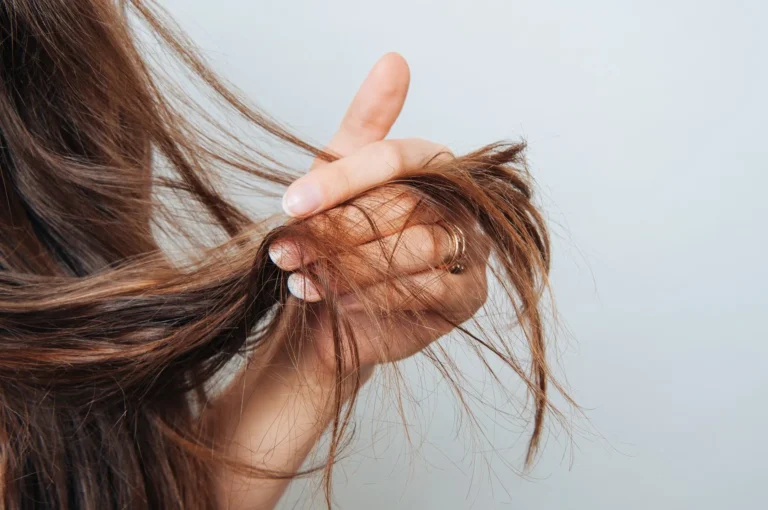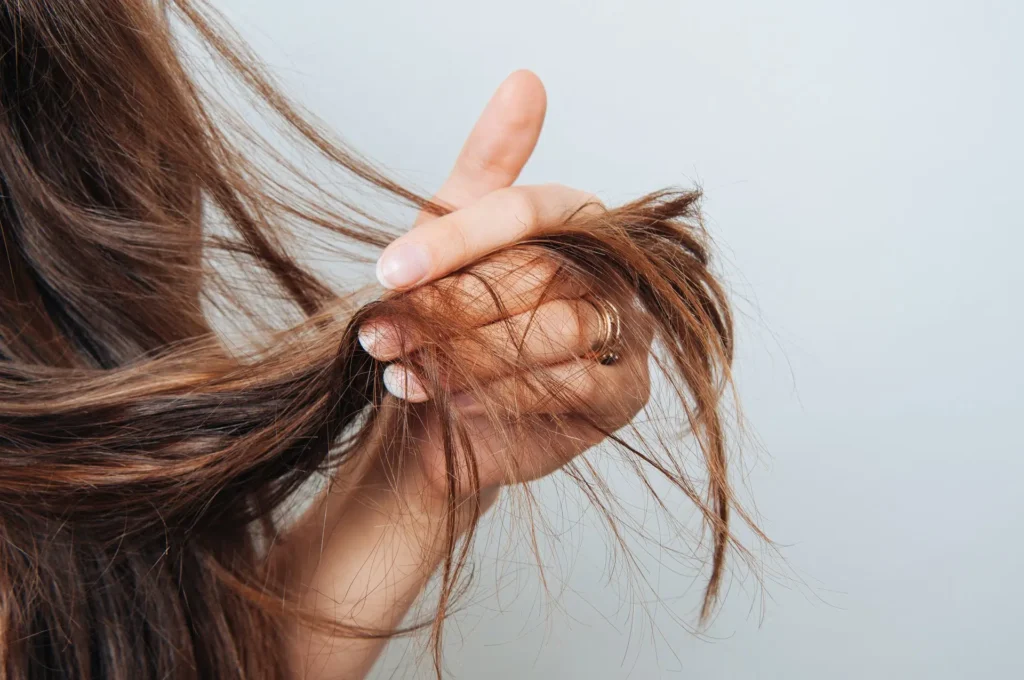
Of our entire hair, 90% is in the growth phase, and 10% is in the shedding phase. The life cycle of hair is approximately 5 years and is made up of 3 phases

The anagen phase growth phase
Hair is born in hair follicles or pilosebaceous follicles. These are small bags or bulbs that contain sebum and the hair matrix. This phase is the longest and can last several years.
The catagen phase growth cessation phase
The cells stop multiplying and the base of the hair separates from the follicle. The duration of this phase is from a few weeks to a few months.
The telogen phase shedding phase
The hair reaches the surface of the scalp and gradually ends up falling out. A new hair is born in the hair follicle.
Losing a hundred hairs a day is nothing abnormal.
But, if the loss has happened suddenly and brutally, it is a reactionary hair loss that may follow a health problem or a curative treatment.
5 health problems that cause hair loss.
First of all, if the symptoms are severe, make an appointment with your general practitioner. He is the guarantor of your health and well-being and will be able to advise you.
1. Alopecia
Also called baldness, it is the partial or total loss of hair and/or body hair. This condition can affect the scalp and different parts of the body.
Hormonal causes
Androgenetic alopecia is a gradual loss of hair due to the influence of male hormones. It is the most common cause of hair loss and is more common in men than women. In most cases, the causes are linked to genetic factors.
This is the most common cause of baldness in women. It occurs after menopause when the protective role of female hormones has disappeared. The hair becomes more fragile and its lifespan decreases.
Nutritional causes
Hair loss can be caused by deficiencies in iron, copper, zinc, silicon, and B vitamins. This type of hair loss affects around 20% of people following a moderate to severe diet. However, it is more often associated with problems of bulimia or anorexia. Most often, the person will regain their hair after some time which can be up to two years.
Alopecia areata
Alopecia areata is a disease-causing hair loss in limited areas. The progression is towards improvement or cure in almost half of the cases within a month but recurrences are frequent.
2. Covid-19
A study carried out in the United States on 1,500 people reveals that one in three people report having suffered significant hair loss during the illness. However, COVID-19 itself would not be the direct cause, but rather the stress suffered by the body to fight against the virus. This phenomenon is called “telogen effluvium”. It causes a hair disorder which generally occurs 3 months after being ill or after experiencing a stressful situation.
3. Chemotherapy following cancer
Chemotherapy is a cancer treatment that relies on the use of drugs. This treatment aims to destroy or prevent rapidly dividing cells from multiplying. This is the case for cancer cells, but also for those of the hair bulb. Chemotherapy will therefore act and cause the destruction of these cells and cause massive hair loss, generally 2 to 3 weeks after the start of treatment.
4. Diabetes
Unbalanced and unstable diabetes can be responsible for hair damage and even loss. The cause is the blood sugar level. When this level is unbalanced, it prevents the blood from properly irrigating the cells of the hair follicle, which finds itself lacking in vital nutrients. A situation that can lead to major hair problems, especially if the attacks are frequent.
5. Thyroid problems
The thyroid is an endocrine gland, meaning it secretes and releases hormones directly into the blood system. By regulating certain hormones, the thyroid also plays a vital role in hair. When it is too little active (hypothyroidism), it can make your hair dry, brittle, and fragile, and slow down its growth. On the other hand, if it is too active (hyperthyroidism), it can cause significant hair loss. Following the modification of the L-tyroxine formula in 2017, it was found that many patients are increasingly suffering from more significant hair loss.
What treatment should I use after hair loss caused by a health problem?
The ESSENTIAL CARE treatment is recommended in the event of hair loss caused by alopecia areata, COVID-19, diabetes, chemotherapy, dietary changes, or simply for preventive action during the change of season.
The ESSENTIAL CARE treatment and its 16 vitamins and minerals will improve, strengthen and maintain hair health by providing all the nutrients necessary for hair health and promoting natural hair growth.
The INTENSE REPAIR treatment is recommended in cases of hair loss caused by a hormonal imbalance such as androgenetic alopecia, post-menopausal alopecia, chronic stress, or a thyroid problem. It restores the health of damaged hair, slows hair loss, and boosts regrowth.
The INTENSE REPAIR treatment provides all the nutrients that hair needs as well as plant extracts known for their benefits and thus improve the hormonal balance of men and women.